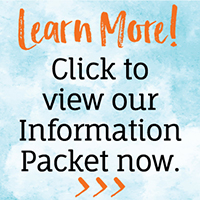RtI Solutions: Visualizing and Verbalizing in Tier 2
Response to Intervention (RtI) always seems simple: in Tier 1, classroom teachers present core curriculum through differentiated instruction. Students who are not making adequate progress receive more targeted help a few times a week. Intervention effectiveness is checked out through progress monitoring and students either move on from needing the extra help, or their needs are addressed in a more intensive Tier 3 setting. Simple, right? Not always!
The challenge for many schools lies in the common practice of choosing a Tier 2 intervention that will address the learning issues that most students students face, by grade level. For example, Tier 2 interventions in primary grades are often reading (decoding) remediations. The flaw in this protocol is that students may be struggling in the classroom for different reasons. While some students may, in fact, benefit from decoding help, others may be struggling because of a comprehension weakness that will not improve, no matter how much extra “help” a student may be receiving.
Clinical research over the last thirty years indicates there is a separate comprehension weakness that is rarely identified. This weakness often undermines the reading process. It is a weakness, based in the sensory system, in creating an imaged gestalt or “whole.”
Schools can use the results from assessments to choose interventions that will address the cause of learning weaknesses.
Of course, some students will need decoding instruction. The small group learning environment in Tier 2 is a perfect opportunity to separate students by learning issue—comprehension or decoding—and target the area that is making school difficult.
In a small group learning environment, teachers can address a primary cause of language comprehension problems: difficulty creating an imagined gestalt. This is called weak concept imagery. This weakness causes individuals to get only “parts” of information they read or hear, but not the whole.
The Visualizing and Verbalizing program develops concept imagery—the ability to create an imagined or imaged gestalt from language—as a basis for comprehension and higher order thinking. The development of concept imagery improves reading and listening comprehension, memory, oral vocabulary, critical thinking, and writing—essential skills for students to gain access to core standards curriculum in the classroom.
If you have students who are demonstrating weak reading or language comprehension skills, you can learn the steps of the Visualizing and Verbalizing for Language Comprehension and Thinking program by attending one of our workshops for teachers: Schedule and Locations.
CLICK HERE to view our recent webinar – Assessments Matter: Transform RtI at Your School






